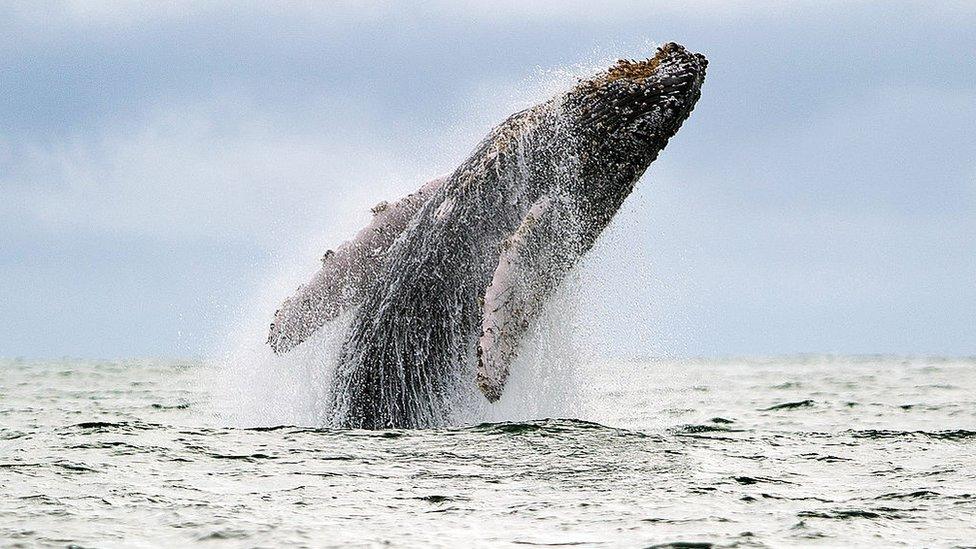Humpback whales no longer on Australia's endangered list
- Published
- comments

Humpback whale numbers in Australian waters have increased significantly over the last 60 years
Humpback whales have been removed from Australia's threatened species list 60 years after the practice of whaling, which is when the mammals are hunted for food and other products like oil, largely came to an end.
Humpback whales, which were once on the brink of extinction, have seen a remarkable improvement in their numbers.
"At the height of the global whaling industry there were as few as 1500 humpback whales in Australian waters, today that population is believed to be as many as 40,000 individuals and growing," said Australia's environment minister Sussan Ley.
Whaling is the process of hunting and killing whales and it's something that used to be very common.
During the 19th and early 20th century, it happened so much that it meant giant mammals almost became extinct.
By the 1960s, fishermen had better ways of catching whales and big ships were built that could process lots of them, so it became even easier to hunt them in greater numbers.
It became clear that something had to change to protect these animals and so a ban was introduced by the International Whaling Commission in 1986.
It was thought this would be a temporary measure until organisations could come up with rules for sustainable commercial whaling - that is, a number of whales that could be hunted while still keeping their numbers stable.
But this never happened - something which whaling nations like Japan, Iceland and Norway have not been happy about. These countries have continued the practice since then and Japan started commercial whaling again in 2019. Iceland has said it'll end whaling in 2024 as demand for meat from whales has fallen.
It suggests efforts to look after the mammals have been largely successful. However, the Australian government says measures will still remain in place to protect the mammals.
"This is not about removing safeguards for humpbacks, which are still a protected migratory species, but it is a recognition of the success of the outstanding conservation efforts that are in place," Minister Ley said.
"Our removal of the humpback from the threatened species list is based on science and sends a clear signal about what can be achieved through coordinated action. It is a message of hope for the welfare of a number of species."
The humpback whale population in Australian waters has increased from 1500 to an estimated 40,000
Despite the positive change to humpback whale numbers, conservationist groups supporting the protection of the animals have raised concerns about the impact climate change could have on humpback whale numbers as the world's oceans get warmer.
Krill are a major food source for the whales
It's believed changes to ocean temperatures could have a significant impact on krill populations in Antarctica. Krill are one of the main food sources humpbacks rely on.
The whales also face problems caused by plastic pollution, with the mammals getting trapped in larger plastic items and swallowing smaller objects.
WATCH: Martin finds out why plastic is a problem (Pictures from Greenpeace, Caroline Power and Blue Planet II/91热爆 iPlayer)
- Published4 January 2021
- Published20 February 2020
- Published11 June 2021
